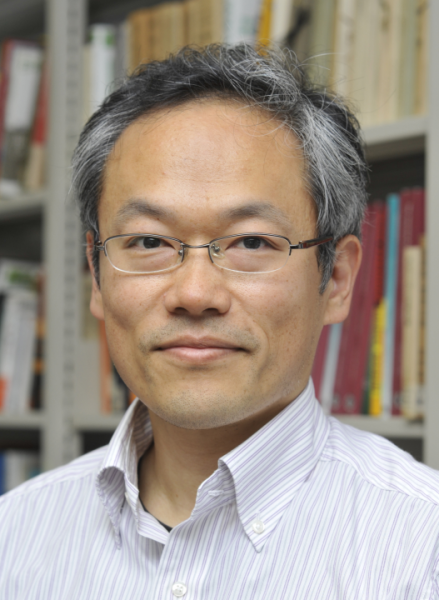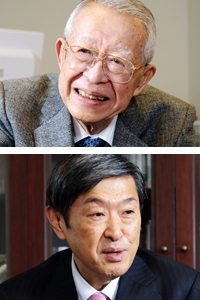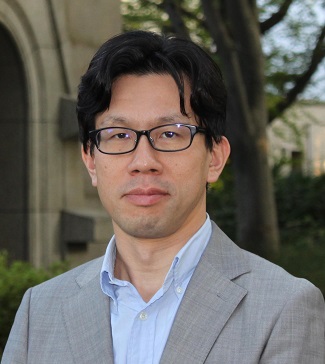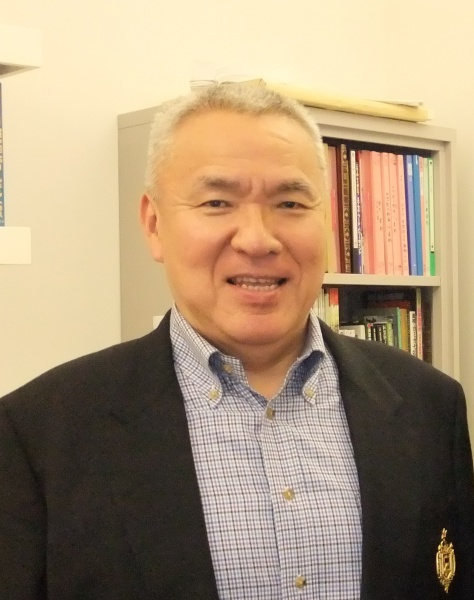Japan’s Responsibility Sharing for the U.S. Extended Deterrence
Japan is now poised to increase its own efforts to enhance the credibility of U.S. extended deterrence, casting aside a long-held ambivalent stance of distancing itself from U.S. nuclear strategy, while relying on it to deter the threat of nuclear weapons.
The National Security Strategyadopted on December 17 last year by the Liberal Democratic Party (LDP)-led coalition government of Prime Minister Abe Shinzo recognized that “the extended deterrence of the United States with nuclear deterrence at its core is indispensable” for Japan’s security against the threat of nuclear weapons. It also stressed the country’s preparedness to “work closely” with the United States in order to enhance the credibility of its extended deterrence, including Japan’s own efforts for ballistic missile defense (BMD)[i].
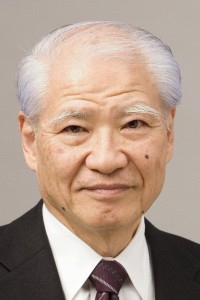
SATOH Yukio is Vice Chairman of the Board of Trustees of the Japan Institute of International Affairs (JIIA).
The National Security Strategy was the first policy statement of its kind for Japan, which replaced the Basic Policy for National Defense to which Japan had been holding since 1957. The new and fifth National Defense Program Guidelines (NDPG) adopted at the same time expressed the same recognition with regard to the U.S. extended deterrence and stated that Japan would “cooperate” with the United States in order to enhance its credibility[ii].
It must be noted, however, that these two documents were not the first policy announcement affirming Japan’s departure from ambivalence toward the U.S. extended deterrence. The previous (fourth) NDPG adopted in December 2010 by the Democratic Party of Japan (DPJ)-led coalition government of Prime Minister Kan Naoto recognized for the first time ever that the U.S. extended deterrence was essential for Japan’s security and announced the country’s preparedness to cooperate with the United States for enhancing its credibility.
That both the liberal and conservative governments took the same stance testifies to an emerging domestic consensus in support of a policy for Japan to share some responsibility for making the U.S. extended deterrence credible, although the announced policy is yet to be implemented.
Three Questions Relevant to Credibility
Seen from the perspective of recipients of the U.S. extended deterrence, three questions are particularly relevant to the credibility of U.S. commitment:
– Whether U.S. force posture and weapon systems would be such that would credibly guarantee Washington’s declaratory policy;
– Whether potential adversaries to be deterred would be induced to fear that their attack on U.S. allies might incur U.S. nuclear retaliation; and,
– Whether the recipients of the U.S. extended deterrence would be able to convince themselves of U.S. preparedness to retaliate against their aggressors with nuclear weapons if necessary.
It is in relation to the third question that the National Security Strategy of 2013 and the NDPGs of 2010 and 2013 are important, for together they signify an epoch-making change in Japanese stance
The first question related to U.S. force posture and weapon systems could be an important agenda item for consultations between the United States and its allies. It is encouraging in this context that official dialogue on extended deterrence has begun to take place between Washington and Tokyo, as will be discussed later.
On the other hand, the second question related to potential adversaries’ perceptions regarding U.S. preparedness would not be credibly assessed in cases relevant to Japanese security: namely, North Korea and China. Given the perceived lack of rational policy judgment in Pyongyang, it is doubtful if North Korea would understand U.S. declaratory strategy correctly and behave accordingly. And, while it is plausible to assume that the U.S. extended deterrence in relation to China would become a corollary to the U.S.-China strategic relationship, even defining “strategic stability” between the two countries is yet to be explored, let alone conceptualizing the way the United States may deter China in defense of its allies like Japan.
Anti-Nuclear Weapons Sentiment
For over fifty years since Japan signed the first Security Treaty with the United States in 1951 as the country recovered independence from the U.S.-led occupation, consecutive Japanese governments have tried to avoid involvement with U.S. nuclear strategy. Behind it was a strong anti-nuclear sentiment prevailing in a broad spectrum of public opinion, which emanated from the experiences of being the first and hopefully last victim of nuclear explosions.
For example, the Basic Policy for National Defense of 1957 did not mention U.S. nuclear deterrence. In the late 1960s, the Japanese government announced the Three Non-Nuclear Principles of “not possessing nuclear weapons, not producing them and not permitting their entry into the country” as the country’s prime national policy, which was later reaffirmed by parliamentary resolutions adopted by both houses of the Diet. In attaining the reversion of the administrative rights over Okinawa from the United States in 1972, Tokyo successfully gave top priority to persuading Washington to withdraw nuclear weapons deployed and stored on the island.
In defense policy, the first and second National Defense Program Outlines (NDPO), respectively adopted in 1976 and 1995, as well as the third NDPG of 2004 all reiterated a policy stance to wholly leave the issue of deterring threats of nuclear weapons in the hands of the United States. Both “National Defense Program Outlines” and “National Defense Program Guidelines” are the English translation of the same title of a series of defense policy statements, “Boei-Keikaku-Taiko.”
Concerned more about anti-nuclear public opinion than the credibility of U.S. commitment, consecutive Japanese governments adopted a posture of being a reluctant recipient of the U.S. extended nuclear deterrence, which was regarded as a “necessary evil” particularly during the Cold War. Tokyo could afford to do so, because it believed as then-Foreign Minister Kuranari Tadashi stated at the annual conference of the International Institute for Strategic Studies (IISS) held in Kyoto in 1986, that the U.S. nuclear deterrence would function effectively in the Asia-Pacific region “so far as the American nuclear forces in total remain balanced against the total Soviet nuclear power in the global context.”[iii]
Introduction of Nuclear Weapons: A Telling Episode
In hindsight, the way in which a long-lasting controversy concerning port-calls by U.S. nuclear capable vessels had been brought to an end was the most telling episode epitomizing changes in the Japanese attitude toward nuclear deterrence.
The question at issue was a widely held suspicion that the Japanese government was not being truthful when it asserted that U.S. nuclear weapons had never been brought to Japan (except for Okinawa under U.S. administrative control). To vindicate the assertion, consecutive Japanese governments, mostly those led by the LDP but including those led by non-LDP prime ministers (after the Cold war), argued that Washington had not requested “prior consultations” with Tokyo, a process that would be required if the United States wished to introduce nuclear weapons into Japan.
It is now known that Washington confidentially informed Tokyo that the United States did not consider entry into Japanese ports and passage through its territorial waters to be “introduction” of nuclear weapons. However, Tokyo was reluctant to squarely address the issue and Washington, too, refrained from making this an open issue, both out of concern that doing so would add fuel to a strong anti-nuclear sentiment on the part of the Japanese public and thereby undermine public support for the Japan-U.S. Security Treaty itself.
The episode is now history. On the one hand, U.S. President George H.W. Bush announced in 1991 the withdrawal of non-strategic nuclear weapons from U.S. vessels and aircraft. On the other hand, the domestic debate in Japan was brought to an end in 2009 by an academic research report commissioned by the DPJ’s Foreign Minister Okada Katsuya. The report confirmed that there were differences between Tokyo and Washington in their understanding of what was meant by “introduction” of nuclear weapons and that both sides knew the differences.
The most intriguing part of this episode was that public reaction to the report was calm. It was partly due to the fact that U.S. nuclear capable vessels were no longer carrying nuclear weapons then, according to the presidential order of 1991. But more significantly, the Japanese, already concerned about the potential threats posed by North Korea’s nuclear weapons and missile development, were acutely aware of the importance of the U.S. extended deterrence. Some, albeit in the minority, even advocated changing the Non-Nuclear Principles from “three” to “two-and-a-half,” seemingly meaning to permit U.S. vessels and aircraft carrying nuclear weapons to transit through Japan and its territorial waters and airspace as necessary. Leaving aside the strategic question of whether transit or even introduction of nuclear weapons would be necessary in order to enhance the credibility of U.S. extended deterrence, it must be pointed out that such voices represented the increased recognition among the Japanese public of the importance of the U.S. extended nuclear deterrence.
Changing Security Circumstances
Against this backdrop, policy statements of positive support for the U.S. extended deterrence stressed in the National Security Strategy of 2013 and the NDPG of 2010 and 2013 marked a clear departure from the long-held ambivalence toward U.S. nuclear strategy described above.
Japan’s policy shift is, however, not attributable to the weakening of public sentiment against nuclear weapons. On the contrary, anti-nuclear sentiment in a broader context, including negative opinion concerning nuclear power generation, has become stronger in the wake of the accidents at the Fukushima Daiichi nuclear power plant on March 11, 2010. It is therefore even more noteworthy that the 2010 NDPG containing a positive approach toward the U.S. extended deterrence (“including nuclear deterrent as a vital element”[iv]) was adopted nine months after the Fukushima accidents.
Changes in Japanese attitude toward the U.S. extended deterrence are the consequence of worsening security circumstances on the one hand, and the evolution of U.S. deterrence strategy on the other. The increased potential threat posed by North Korean nuclear weapons and missile development has changed Japanese security perceptions in favor of stronger defense and closer alliance cooperation with the United States. Most symbolically, the test-launch of a missile, Taepodong, over Japan in 1998 prompted Japan to strengthen BMD cooperation with the United States. The subsequent U.S.-Japan co-development of a next-generation interceptor, SM-3 Block II A, is one of the most advanced among allies’ BMD cooperation with the United States.
The continued growth and modernization of Chinese military power and Beijing’s aggressive policy seemingly aimed at changing the regional order, even by force, added to Japanese security concern and led Tokyo to further strengthen its own defense efforts, shifting strategic focus from the North to the South-West, and its military cooperation with the United States.
From a short-term perspective, China’s recent attempts to challenge Japan’s long-established territorial claim on the islets in the East China Sea, “Senkaku-Shoto” (called “Diaoyutai” in Chinese), are straining bilateral relations. While the issue is a matter to be managed primarily by Tokyo, Washington’s repeated confirmation that the Japan-U.S. Security Treaty is to cover these islets is reassuring to the Japanese in the context of U.S. commitment to the defense of Japan, including extended deterrence.
How to protect Japanese control over the islets is not immediately an issue to test the credibility of the U.S. extended deterrence. But Washington’s unequivocal commitment has reassuring implications for the way for the Japanese to perceive the credibility of U.S. extended deterrence. For it is presumed in Tokyo that a seamless linkage exists from Japan’s own efforts for protection of its territorial control to alliance cooperation to be provided by the United States, which would include nuclear deterrence if necessary.
China also poses long-term strategic challenges to both Japan and the United States. While both Tokyo and Washington regard China as an important economic partner with potentials to become a political partner in addressing regional problems (such as North Korea’s nuclear weapons and missile development), the two countries see a growing need to hedge against increasing, albeit potential, threats from China. How to balance requirements in the two dichotomized policy dimensions of engagement and hedging should be an important agenda item for strategic consultations between Tokyo and Washington.
Increased Japanese Efforts Required
When avoiding involvement with U.S. deterrence strategy, the Japanese government could refer only to the assurances given by the U.S. government, including the repeated commitment made by the presidents, in order to domestically argue for the credibility of U.S. extended deterrence. By contrast, the country’s participation in common deterrence efforts with the United States would no doubt help enhance the credibility of the U.S. extended deterrence as perceived by the Japanese, who are increasingly aware of its importance. That is because it would provide the Japanese government with the means and opportunities to know U.S. deterrence strategy better and try to have its views reflected in the alliance’s common deterrence strategy. In turn, this would make the Japanese government position in public relations concerning the credibility of U.S. extended deterrence more persuasive than the time when it had distanced itself from U.S. deterrence strategy.
In this context, changes in U.S. strategy to reduce the role of nuclear weapons and increase that of conventional forces in deterrence strategy have helped make it politically easier for Japan, particularly the Self Defense Forces (SDF), to take part in the alliance’s deterrence efforts without worrying about possible conflicts with the country’s non-nuclear policy. As noted later, a newly institutionalized dialogue on extended deterrence, which presumably includes discussion on nuclear deterrence, has incurred little negative reaction either from domestic pundits or public opinion.
The prospect for diminishing U.S. defense budgets has also added to causes for Japan to expand defense cooperation with the United States. Although different in scale from U.S. defense spending, the Japanese government began to increase defense budgets in FY 2013 after reductions for ten consecutive years.
Japan has many resources with which to participate in the common deterrence strategy. They include, among many others, efforts to facilitate U.S. force presence in the country with financial support most generous among U.S. allies, increased defense cooperation between the two countries’ forces, and foreign policy cooperation to promote the shared strategic interests, including use of official development assistance (ODA) for common strategic purposes, as specifically mentioned in The National Security Strategy.
Of these resources, an increased role of the SDF in joint efforts with U.S. forces would be particularly important, because of the centrality of defense cooperation in the common deterrence strategy and also given the prospect for U.S. defense budget cuts. With this recognition, the National Security Strategy stressed the preparedness to cooperate with the United States in broad policy areas, including joint training, joint intelligence, surveillance, and reconnaissance (ISR) activities, and joint/shared use of facilities by the two countries’ forces; operational and policy coordination including contingencies planning as well as mid and long-term strategy; and security cooperation in broad areas such as BMD, sea, outer space and cyberspace as well as large-scale disaster response.
The future roles and missions for the SDF to play in the common deterrence strategy and the capabilities for the SDF to be required to equip itself to the end will be determined through the ongoing joint review of the Guidelines for Japan-U.S. Defense Cooperation. But it remains yet to be seen how far and how fast the Japanese government would make it possible, both legally and in terms of budget, for the SDF to play the required roles and missions with required capabilities.
The importance of the Japanese government’s plan to change a long-held constitutional interpretation prohibiting the SDF to exercise the right of collective self-defense cannot be overemphasized in this context, for it would determine the scope of the SDF’s participation in the common deterrence strategy. There would no doubt be limits to the extent to which changing interpretation would allow the SDF to engage in operations for collective self-defense. Nevertheless, such engagement, albeit limited, would expand the SDF’s contributions to alliance cooperation.
Extended Deterrence Dialogue
Another significant change in Japan’s attitude toward the U.S. extended deterrence is Tokyo’s recent participation in dialogue with Washington on deterrence strategy, including nuclear deterrence, the process which Japan had long denied itself by distancing from U.S. nuclear strategy. Here again, U.S. policy to reduce the role of nuclear weapons in deterrence strategy has made it politically easier for Japan to participate in such consultations. Indeed, little domestic criticism was voiced of Tokyo’s engagement to date in dialogue with Washington on extended deterrence.
The process of the Obama administration’s 2010 Nuclear Posture Review (NPR) gave a more than ever significant opportunity for Japanese government officials to confidentially present Japanese views on U.S. nuclear posture. On Capitol Hill, the Congressional Commission on the Strategic Posture of the United States, which heard from Japanese and other foreign officials, stressed in its final report published in 2009[v] the importance of establishing “a much more extensive dialogue with Japan on nuclear issues,” adding, “Such a dialogue with Japan would also increase the credibility of extended deterrence.”
The initial low-key consultations between the two countries’ foreign and defense policy officials, which began by invitation from the U.S. side, turned out to be productive to both Washington and Tokyo, so that the two governments agreed in 2010 to institutionalize the process which they named the Extended Deterrence Dialogue.
Given that the concept of U.S. extended deterrence itself would require readjustments and redefinition in order to make it viable under the changing global and regional geopolitical conditions, it would be critically important for Tokyo to participate in the making of the shared deterrence strategy (or strategies) with Washington from the position of recipient of the U.S. extended deterrence.
The challenging questions before them are already numerous, including such questions as how to define “strategic stability” among the United States (and the U.K. and France on its side), Russia and China in both bilateral and trilateral terms, how to “tailor” deterrence strategy to different regional geopolitical conditions, and how to bring advanced conventional capabilities and new technologies into the concept of strategic balance.
Among them, the earlier mentioned question of how to balance needs for economic interdependence and political cooperation with China and requirements for hedging against its growing military power would be most challenging in redefining the concept of deterrence. For unlike the case of deterrence strategy against the Cold War-time Soviet Union, it would be very difficult to publicly conceptualize in peacetime a deterrence strategy aimed at hedging against a hypothetical possibility that cooperative or non-adversarial relations with Beijing might change into confrontational or adversarial ones.
Another important task before the Japanese and U.S. governments is to connect the Extended Deterrence Dialogue on strategy and the process to review the Guidelines for Defense Cooperation within the structures of alliance consultations organized under the so-called Two-Plus-Two Ministerial Meetings between the Japanese Foreign and Defense Ministers, and the U.S. State and Defense Secretaries.
The ongoing joint review of the Guidelines for Defense Cooperation seems to be conducted separately from the Extended Deterrence Dialogue, which has just begun. But it would be necessary to connect the two processes in order to make the future, if not the next, guidelines reflect shared deterrence strategy to be conceptualized through the process of the Extended Deterrence Dialogue. This would be essential in order to make defense cooperation between the Japanese SDF and U.S. forces such that it would better serve the purposes of the common deterrence strategy between the two countries.
Envoi
As noted earlier, the shift of Japanese attitude toward the U.S. extended deterrence from one of reluctant recipient to one of positive participant remains as yet at the level of policy pronouncement. To substantiate in terms of legislation and budget the liberal-conservative consensus attained on the need for Japanese efforts is what will be required of Tokyo’s politics in the coming years.
Originally written for Discuss Japan. [March 2014]

